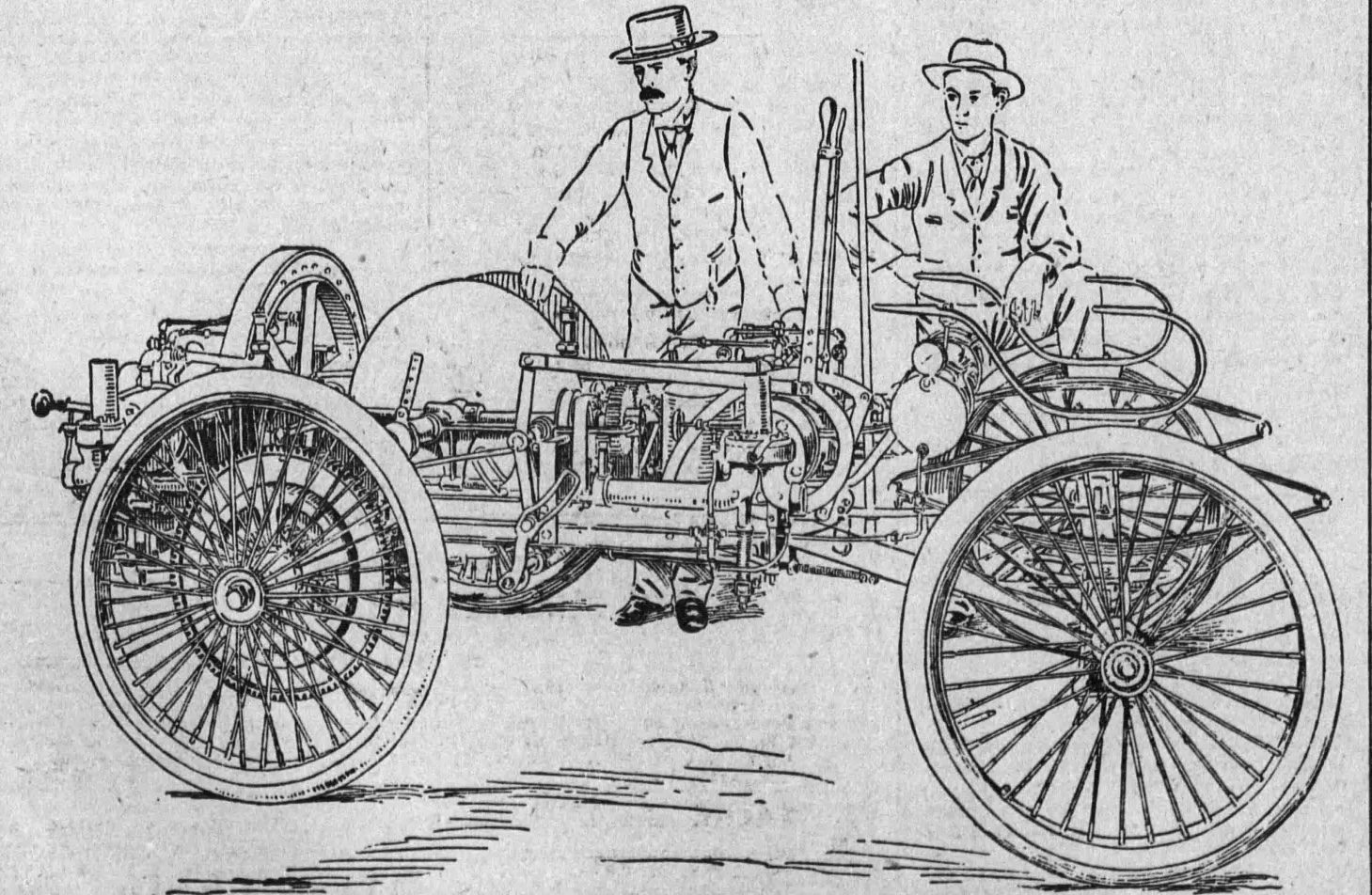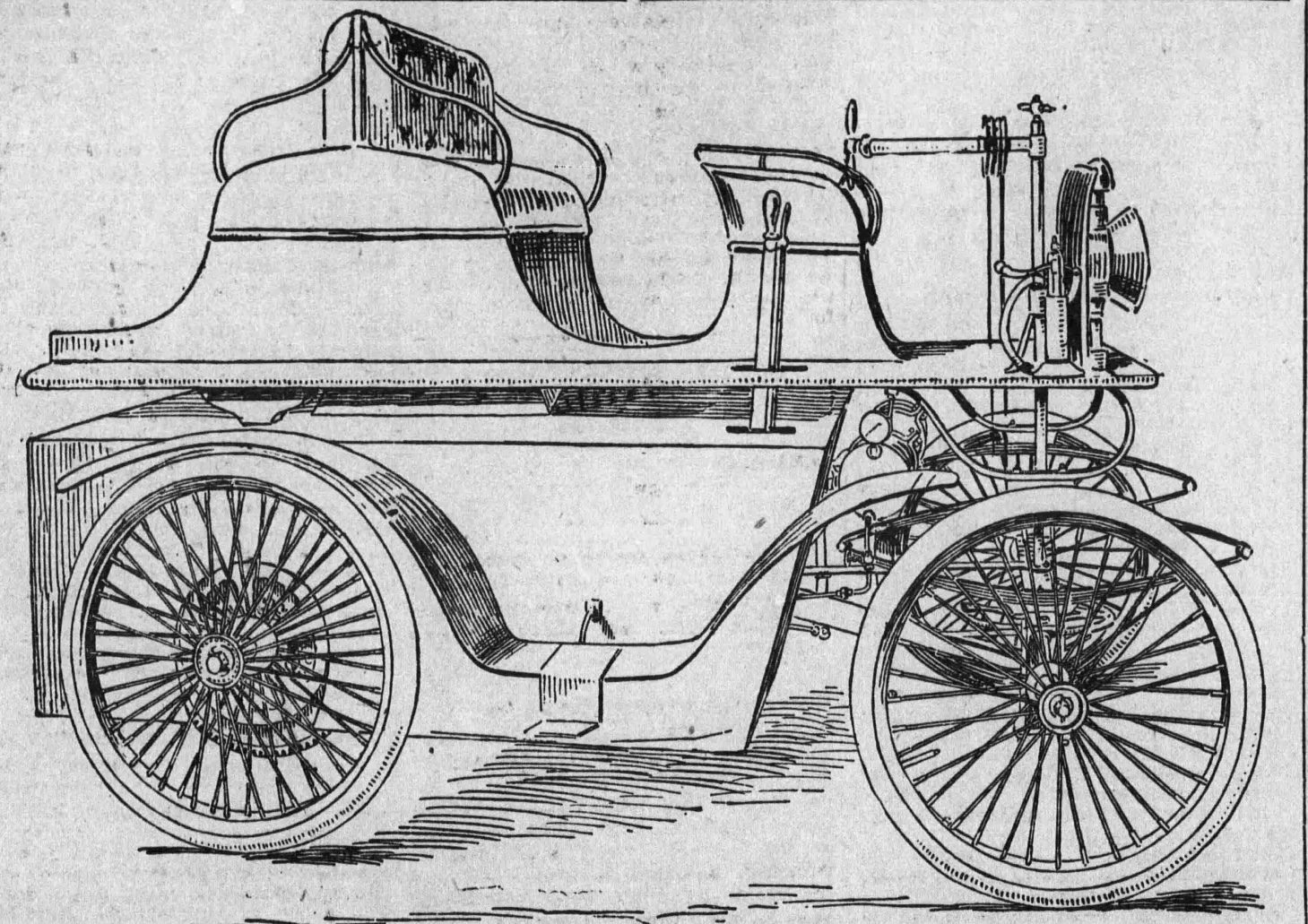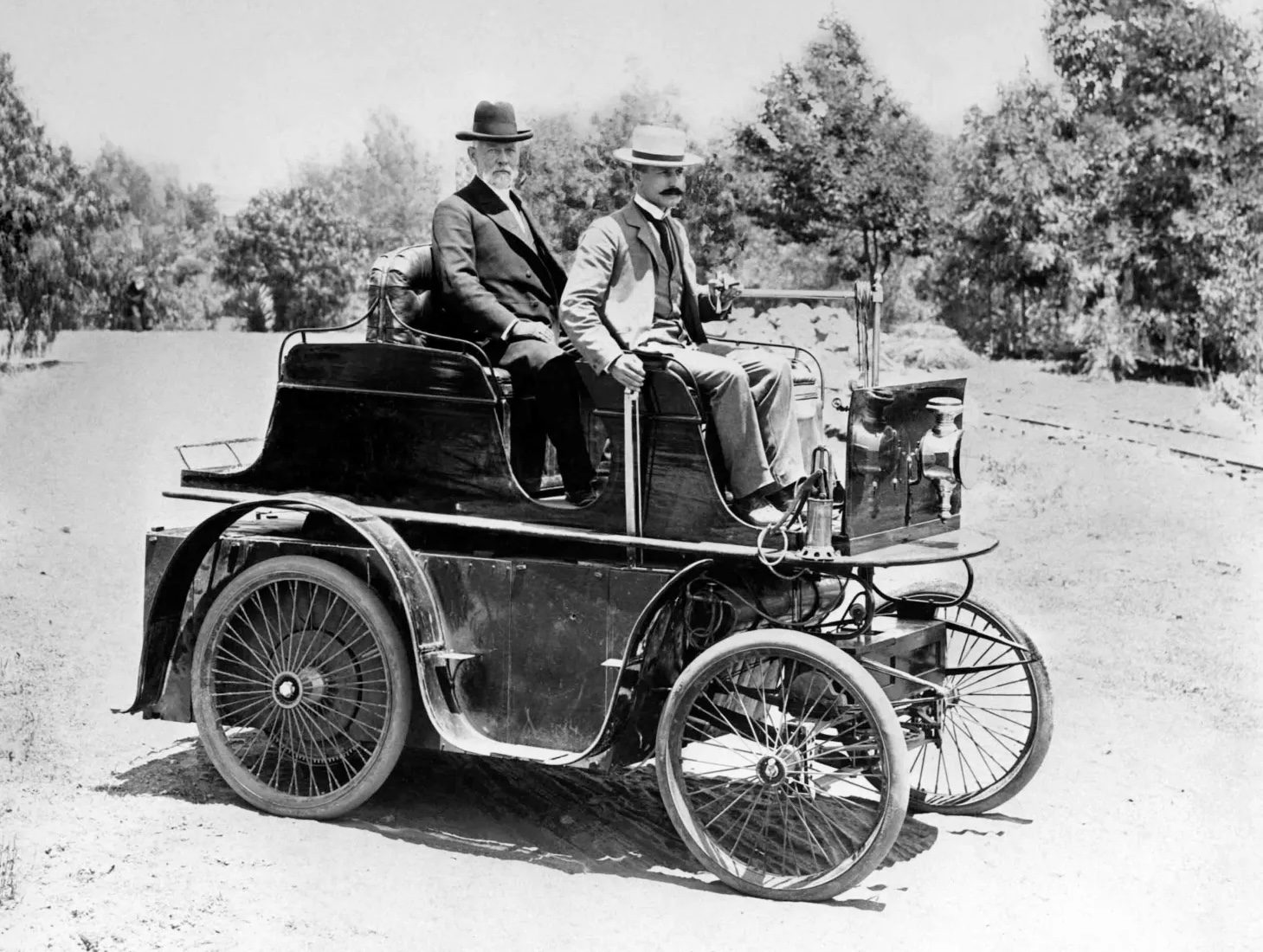Southern California’s famous automotive culture began during the early days of automobile manufacturing. On the early morning of May 30, 1897, the first gasoline-powered car in Southern California arrived from a machine shop on West Fifth Street in Los Angeles. It was a horseless home carriage built for engineer J. Philip Erie, who came up with its concept. The automobile, with eight passengers in the cabin, moved slowly through Los Angeles’s streets, scarcely moving faster than pedestrians. After a brief halt for minor repairs, the car was driven to Erie’s home in Boyle Heights and quietly abandoned as a failed experiment. For Los Angeles, which swiftly became the world’s automobile center, the foundation for the invention was laid in 1897 with the construction and testing of the first automobile designed by James Philip Erie and built by Samuel D. Sturgis. Learn more at la-future.
Many years ago, a copy of photographs taken between 1887 and 1888 was presented by the family of William H. Workman, the then-time mayor of the city of Angels. It depicted the city’s first car. In the photograph, James Philip Erie is sitting in his car, which is parked in front of his magnificent Boyle Heights residence. You can also discover more about the Petersen Automotive Museum in Los Angeles, which features classics as well as custom builds.
Who invented and built the car?
There is little information available about the car’s creator Erie. He is believed to be from New York, although no census or other vital records have been uncovered. Sources of information about the inventor include some listings in city catalogs and voter registration lists, references to patents he obtained and newspaper and magazine articles. James Erie, the sole person with this surname, began his career as a Wall Street broker in New York City in 1891 before becoming a clerk three years later. However, in 1895, J. Philip Erie was in Los Angeles for medical treatment.
However, when Erie registered to vote on May 1, 1896, he listed California as his homeland. He lived in a large house with distinctive rounded corners on State Street, located west of Hollenbeck Park in Boyle Heights. According to the 1897 Los Angeles City Directory, he worked as an electrical and mechanical engineer.

Development of the car
Soon, he made a great sensation by designing a horseless vehicle. The Los Angeles Herald published an article on May 30 that stated:
“A knot of belated pedestrians and bicyclists was gathered on Broadway, between Fifth and Sixth streets, about 3 o’clock this morning, attracted by a strange-looking vehicle.”
According to the source, it…
“…stood near one of the curbs, and upon its inner mechanism several workmen were engaged by the flickering lights of candles.”
Despite the vehicle’s expected top speed of 24 mph, it barely moved throughout the test ride due to poor engine performance. Therefore, the automobile was parked.
The next day, the Los Angeles Times published an in-depth assessment of the automobile and its morning commute, when the streets were empty except for a few sleepy police officers. Erie spent approximately $30,000 on his automobiles, which had eleven patents.

According to the article, the mechanism was in a black box under the carriage, which was lined with asbestos and had sufficient ventilation to reduce heat, while fumes were scarcely noticeable. The use of wood fiber and steel gears helped to reduce noise. The inch-thick pneumatic tires were thought to be practically puncture-resistant. The only visible parts were the polished copper cylinder at the front and nickel-plated levers for starting and stopping the engine.
One of the issues was the cooling system that the device was using. It sprayed liquid in contact with air over an extended cooling surface. The majority of the bearings were roller and ball types that did not require lubrication, although the smaller ones, as well as the cylinders, were automatically lubricated. This eliminated the need to oil each individual part. Similarly, gasoline was regulated by a device similar to one used for the oil.
First ride
The first automobile trip to the Erie residence included crossing the First Street Bridge in Boyle Heights and driving on rough roadways. In addition, it was discovered that the asbestos substrate in the engine case burnt like paper. As a result, improvements were implemented later.
The day before the inaugural trip, it was reported that the route would be along Boyle Avenue to State Street, then Aliso Street and finally Main, with a long drive to Jefferson and then to the West End. This was the Pico Heights neighborhood where car designer Samuel Sturgis resided. However, both rides were delayed by a day due to minor defects discovered in the vehicle. Nevertheless, within a few days, the novel device was ready to be put into active service to help free the horse from slavery. It was planned to transport the car to San Bernardino or Redlands over the weekend, with a five- to six-day trip to test it.
However, the Times stated that the car could not be used for another week. After all, some locally produced steel parts utilized as piston heads in cylinders proved to be defective, prompting the search for replacements in Pennsylvania. The objective was to ensure that the machine was completely ready before proceeding with further tests. It was reported that the tires, on the other hand, held up well even while purposely driving on bottles.
All four cylinders of gasoline-powered cars were successfully tested. With two cylinders in the car, it was possible to drive up the steepest hills in Boyle Heights and reach speeds of 12 miles per hour on flat land.
Vehicle operation
However, there were no further reports in local publications about the car’s future operation. In the spring of 1898, Erie and partners, including Daniel F. McGarry, established the Erie Pneumatic Hub. The inventor traveled to the East on several occasions to work on patents for the car.
However, financial troubles arose swiftly, including mortgage debts on the Boyle Heights residence, bill foreclosures and unpaid taxes. While Erie continued to invent things like bottle stoppers and water heaters, his home was sold at a sheriff’s tax sale in 1901.

In March 1902, the Bekins Van and Storage Company announced that it would be auctioning off three- and single-seater cars for the sum of $147, which was the cost of unpaid storage fees at the company’s warehouse. Erie appeared to have remained in the city of Angels until around 1906 when he registered his patent for a water heater, but four years later he was reported to be in Denver. It was there that the General Aviation Company was established, and Aero magazine stated that a well-known Pacific Coast aviator named James Philip Erie was involved in car demonstrations. According to the Mile High City directory for the year, Erie, who resided in a hotel, worked for the Fritchle Automobile and Battery Company. Three years later, he was in San Francisco, and his voter registration listed him as an aviator. After that, there is no information about his activities.
Although his horseless carriage project wasn’t ultimately successful, and Erie’s later life was mostly shrouded in mystery, as were his early years, he was occasionally recognized as a Los Angeles-based automotive pioneer. The only visual record of Erie’s partially successful invention is a photograph of him in his car near his home, as well as another picture of the inventor with William H. Workman in an automobile.


